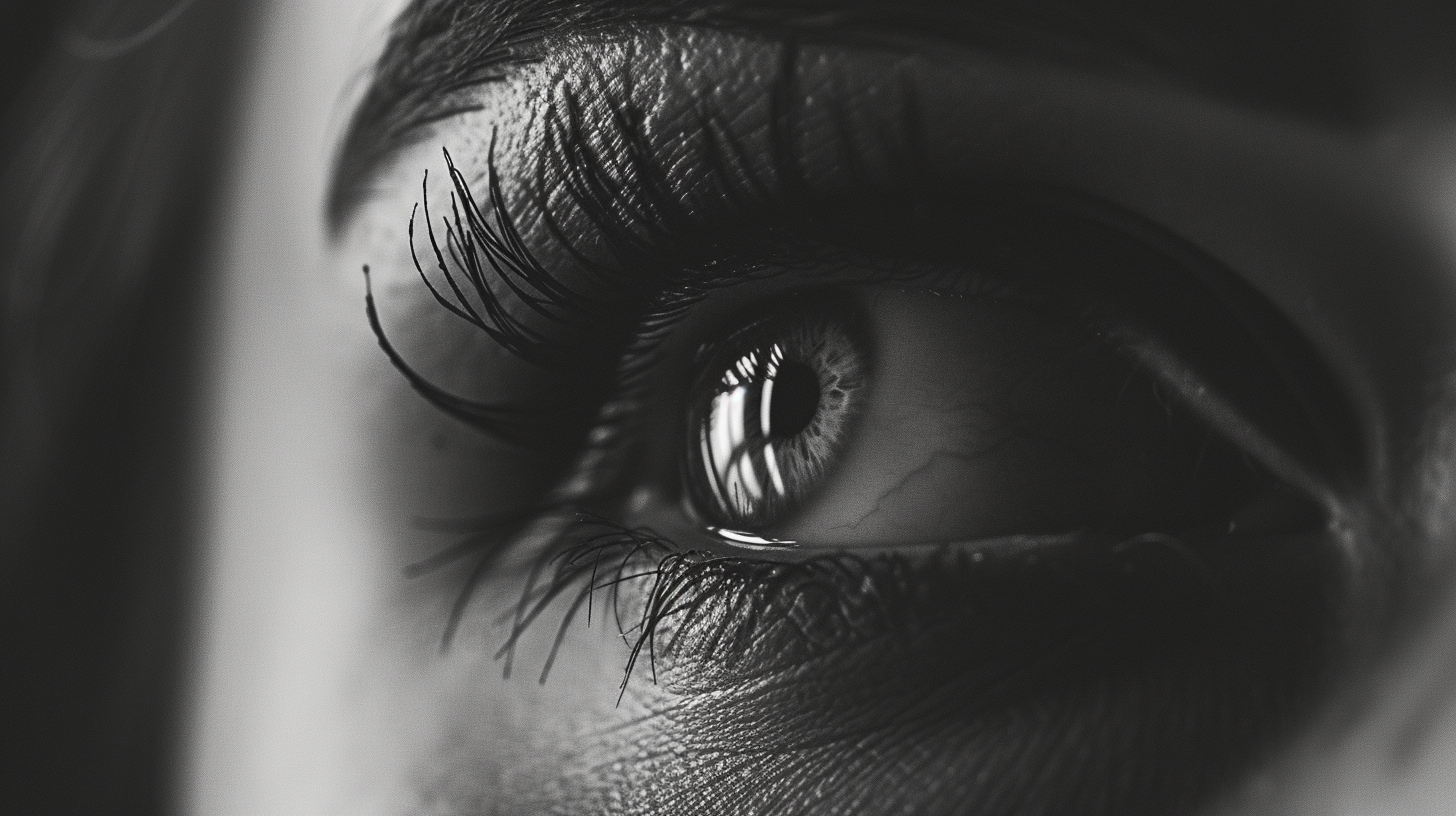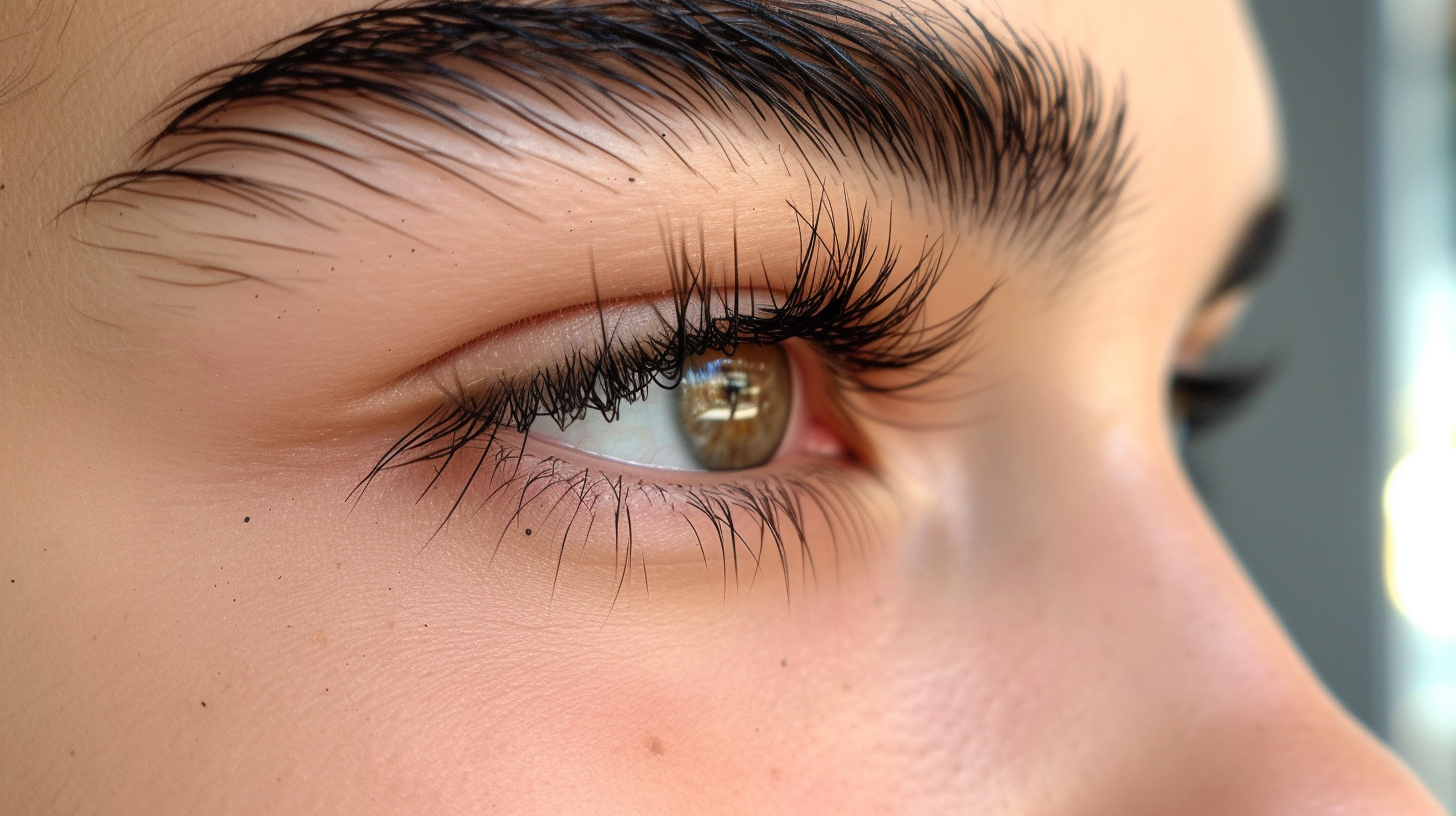Just as you’re pondering the origins of the everyday items you use, you might find yourself curious about where human hair eyelashes actually come from.
You’re not alone in your curiosity; the journey from hair to lash is not only fascinating but wrapped in layers of ethical considerations and intricate craftsmanship.
Collecting and sourcing methods vary widely, raising questions about sustainability and ethics that you might want to explore further.
While the process of transforming human hair into the perfect set of lashes is an art in itself, the global suppliers and markets behind this beauty staple suggest a complex story waiting to be uncovered.

Where Do Human Hair Eyelashes Come From?
Nearly all human hair used in eyelash production originates from people who’ve chosen to sell their locks for economic reasons.
You mightn’t often think about it, but the hair on your head and the eventual eyelashes framing someone’s eyes come from a complex world of hair genetics and growth cycles.
Hair genetics play a pivotal role in determining the texture, color, and growth rate of hair. It’s fascinating, really.
The hair you might decide to sell one day can vary widely in characteristics, all because of your unique genetic makeup.
Now, onto growth cycles. Your hair goes through three main stages: growth (anagen), cessation (catagen), and rest (telogen).
Only during the anagen phase, which can last anywhere from two to six years, does your hair actively grow.
This cycle is essential for the production of long, healthy hair that’s ideal for creating eyelashes. The longer the hair stays in the anagen phase, the more suitable it’s for eyelash crafting, due to its length and health.
How Do They Collect Human Eyelashes?
You might wonder how human hair, destined to become eyelashes, is collected and sourced from individuals around the world.
It’s a process that intertwines traditional methods with modern collection technologies, ensuring the hair remains in the best condition possible.
Hair treatments play a significant role in preparing the hair for its transformation into fine eyelashes, enhancing both its durability and aesthetic appeal.
Collection methods vary, often based on geographical location and the availability of hair.
Some regions have a tradition of donating hair as part of cultural or religious practices, which then becomes a source for these eyelashes.
In contrast, in other areas, individuals might sell their hair directly to collectors as a means of income. Advanced collection technologies have made it easier and more efficient to gather, sort, and prepare human hair for its next stage of life.
The emotional journey from hair donation to eyelash creation can be profound. Consider the following table, which captures the essence of this path:
| Step | Description | Emotional Impact |
|---|---|---|
| Collection | Hair is gently cut and collected. | A sense of donation or sacrifice. |
| Treatment | Hair undergoes treatments to ensure quality. | Anticipation of transformation. |
| Sorting | Hair is meticulously sorted by length and quality. | Appreciation for the meticulous process. |
| Crafting | Hair is crafted into eyelashes. | Joy in creation and contribution. |
| Final Product | Eyelashes are ready for use. | Satisfaction in the beauty added to lives. |
Ethical Considerations
You need to consider the ethical implications behind the production of human hair eyelashes.
Sourcing practices, worker welfare, and environmental impact are points that can’t be overlooked.
It’s essential to understand how each of these factors plays a role in the products you choose.
Sourcing Practices
In exploring the origins of human hair eyelashes, examine the ethical considerations surrounding their sourcing practices.
The journey from raw materials to the final product is heavily influenced by market demand, leading to important questions about how these materials are obtained.
- Transparency: Knowing where and how the hair is sourced.
- Consent: Ensuring the hair is donated or sold willingly.
- Sustainability: Assessing the impact of sourcing practices on the environment.
- Fair Trade: Guaranteeing fair compensation for those providing the raw materials.
Worker Welfare
Beyond sourcing practices, consider the well-being of workers involved in producing human hair eyelashes.
These places, often tucked away, are where the real magic happens, but at what cost? It’s not just about getting the best quality hair; it’s about ensuring that the people behind the product are treated fairly.
Are they working in safe conditions? Do they receive fair wages and benefits? These questions matter.
You’re part of a larger ecosystem when you buy these products, and understanding the ethics behind worker welfare is essential.
It’s about making informed choices that respect both the craft and the craftspeople.

Environmental Impact
While considering the welfare of workers is key, it’s equally important to reflect on the environmental impact of producing human hair eyelashes.
You mightn’t think about it, but this industry affects our planet in several ways.
- Recycling possibilities decrease as synthetic materials mix with human hair, complicating the recycling process.
- The chemical treatments required to sanitize and prepare the hair can lead to water and soil contamination.
- Manufacturing emissions contribute to air pollution, exacerbating climate change.
- Wildlife disruption occurs when natural habitats are altered to collect or produce these materials.
Being mindful of these impacts helps you make more informed decisions about the products you choose, potentially steering towards more sustainable options.
The Crafting Process
The process begins with meticulous material preparation, where human hair is carefully selected based on its length, thickness, and strength.
This initial step ensures that only the best strands are used, guaranteeing the final product’s superior quality.
Once selected, the hair undergoes a series of dyeing techniques to achieve a variety of shades.
This isn’t your typical dye job; it requires precision and skill to ensure the colors are uniform and match a wide range of natural eyelash tones.
The dye used is specially formulated to be gentle on the hair, preserving its natural softness and flexibility, which are essential for a comfortable wear.
After dyeing, the hairs are washed and conditioned, making them ready for the next phase.
They’re then intricately hand-tied or machine-sewn onto a thin strip that serves as the lash band. This strip must be flexible yet durable, ensuring it can be shaped to fit the eyelid perfectly while also holding the hairs firmly in place.
The crafting of human hair eyelashes is an art form, requiring skilled artisans who pay close attention to detail.
Each lash is carefully inspected for quality and uniformity, ensuring that each pair you wear is nothing short of perfection.
This attention to detail and dedication to quality is what sets human hair eyelashes apart from synthetic alternatives, providing you with a natural look that’s both beautiful and long-lasting.
Global Suppliers and Markets
The production and distribution of human hair eyelashes span across various countries, with Asia being a major player in the market.
This region, particularly countries like China, South Korea, and Indonesia, has a stronghold due to their advanced manufacturing capabilities and access to raw materials.
But it’s not just about where they’re made; it’s about where they’re going.
The demand stretches globally, influenced heavily by market trends and consumer preferences that dictate the flow of these beauty products.
Here’s a breakdown of what’s shaping the global suppliers and markets for human hair eyelashes:
- Market Trends: The beauty industry is fast-evolving, with trends shifting towards more natural and sustainable products. Human hair eyelashes fit this niche perfectly, appealing to consumers looking for eco-friendly and authentic options. This trend is seeing an uptick in demand in markets outside Asia, especially in Western countries.
- Consumer Preferences: As people become more conscious of the products they use, there’s a noticeable preference for quality and ethical sourcing. Suppliers that can prove their ethical stance and product superiority tend to dominate the market.
- Innovation and Technology: Advancements in manufacturing and design technology allow for a wider variety of eyelash styles, catering to diverse consumer tastes and preferences. This innovation keeps the market dynamic and competitive.
- Global Distribution Channels: The rise of e-commerce platforms has made it easier for suppliers to reach an international audience, expanding their markets beyond traditional borders.
Maintenance and Care Tips
You’ll find that proper cleaning methods and safe storage solutions are key to extending their lifespan.
Let’s explore how you can achieve this to ensure your eyelashes remain as stunning as the day you got them.
Proper Cleaning Methods
Proper maintenance extends their lifespan and minimizes allergy risks associated with the buildup of chemical ingredients found in makeup and adhesive products.
Here’s how to do it:
- Gently remove glue: Use tweezers to carefully peel off any residual glue from the lash band.
- Clean with oil-free makeup remover: Dip a cotton swab in an oil-free remover to clean the lashes, avoiding harsh chemicals.
- Rinse with water: Lightly rinse the eyelashes under lukewarm water to remove any leftover makeup remover.
- Air dry: Lay the lashes on a clean towel and let them air dry completely before storing them away.

Safe Storage Solutions
Once you’ve cleaned your human hair eyelashes, finding a proper storage solution is essential for maintaining their shape and quality.
You’ll need to consider humidity control and light exposure to ensure they last as long as possible. Here’s a concise table with some tips:
| Storage Aspect | Why It Matters | What To Do |
|---|---|---|
| Humidity Control | Prevents mold growth | Store in a dry place |
| Light Exposure | Avoids discoloration | Keep away from direct sunlight |
| Airflow | Keeps them dry | Don’t store in airtight containers |
| Shape Preservation | Maintains usability | Use the original case or a lash holder |
| Cleanliness | Prevents eye infections | Store in a clean, dust-free environment |
Conclusion
In summary, your curiosity about human hair eyelashes has taken you on a journey from their origin, through ethical collection and crafting processes, to global markets.
You’ve learned how they’re sourced, the importance of ethical considerations, and how they’re transformed into the beauty products you adore.
Remember, keeping them in top condition requires proper care. So, cherish the craftsmanship and thought that goes into each pair, ensuring you’re not just enhancing your beauty but supporting responsible practices in the beauty industry.

Hi! My name is Gemma, and welcome to Miss Makeup Magpie. I share helpful articles to help you with beauty tips, tricks and tutorials.
